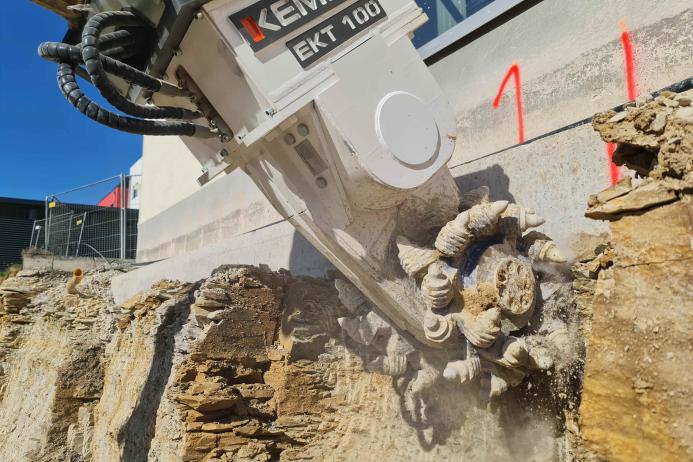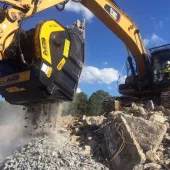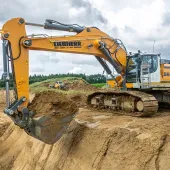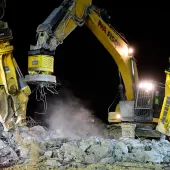Kemroc deliver maximum precision on earthworks project
EKT 100 rotary drum cutter plays major role in supporting buildings and excavating trenches
AS part of a challenging earthworks project in Paderborn, in the eastern North Rhine-Westphalia region of Germany, construction firm Karl Immig GmbH have used a 25-tonne crawler excavator with a Kemroc EKT 100 rotary drum cutter to carefully mill out rock from underneath a building with precision and reduced vibration to create space for the necessary foundations.
Immig were awarded the contract to carry out the complete groundwork for a new build office, including connecting the site to existing utilities and services. However, the construction site is directly adjacent to an existing building. In consultation with local structural engineers, it was therefore decided that the existing building had to be underpinned with 4,500 cubic metres of concrete along the side facing the new job site to prevent possible settlement damage.
Ground conditions under the topsoil consisted of a marly formation of (previous) soil classes 6-7. This hard, layered rock was difficult to loosen using an excavator-mounted bucket. Moreover, excavating the material from under the facade with a hydraulic hammer was not considered due to unavoidable, harmful vibrations to the existing building and the sensitive equipment inside it.
To overcome the challenges on this project, Immig decided to hire a Kemroc EKT 100 rotary drum cutter attachment (100 kW) for use on their 25-tonne crawler excavator.
The machine operator would position the excavator in front of the exposed facade and mill a recess around 30cm deep into the rock beneath the building. This is repeated at intervals of about 100cm along the 15m long facade. Steel reinforcement is placed in the excavated recesses, which are then filled with poured concrete. After hardening, the strips between the reinforced sections are processed similarly.
According to Felix Schäfers, managing director of Immig, the entire process proved to be more efficient and cost-effective than originally expected. ‘Compared to using an excavator with a ripper or hammer, we saved a lot of working time and almost completely avoided any vibration in the building area,’ he commented. ‘In addition, excavating the rock to such a level of accuracy made it easier to install the formwork and fill with concrete.’
The Kemroc drum cutter attachment was also used, with great effectiveness, in the excavation of trenches for the new building. Utilizing a 3D excavator grade control system, as with all hydraulic excavators operated by Immig, the operator created ‘declines or embankments’ using the Kemroc EKT cutter. With the 3D grade system calibrated, the drum cutter attachment excavated trenches at around 80m long (for placement of drainage pipes), with maximum precision and efficiency.
Mr Schäfers said using the rotary drum cutter attachment simultaneously with the 3D excavator grade control system delivered two distinct advantages. ‘First, by using the excavator control system, we avoided a lot of work for surveying and staking out,’ he explained. ‘This allowed us to start excavating exactly and accurately right from the start. Secondly, the drum cutter attachment is much more accurate than conventional rock buckets.’
As a result of the performance, these reduced costs relating to oversizing and backfilling. In addition, the milling produced a fine, homogeneous broken material that was used immediately for backfill or for use on another construction site.










